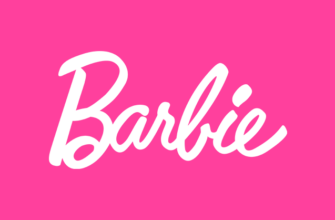Designing a luxury brand is more than just creating a refined logo.
Deep strategic thinking results in luxury brands that are textured, layered, and fulfill an emotional need. This need could relate to being on the cutting edge of design and innovation, or an innate desire to enjoy the finer things in life. The Apples and LVs of this world help their niche audiences consume curated experiences that satiate those desires and strengthen consumer relationships.
To discover how luxury brands are made and how their customers identify with their value proposition, understanding the concept of luxury is necessary.
What is a Luxury Brand?
Luxury, by default, implies exclusivity. When you have something in short supply, it automatically means that only a select few can enjoy it. Purple used to be a luxurious color. The dye to achieve the color was so rare that only the royalty and aristocracy could afford it.
When you saw someone wearing a purple robe in those days, you automatically identified them as belonging to an exclusive club of the wealthy.
The mass production post-industrial revolution has changed that. Purple is a common color now. Yet contemporary brands still rely on it for its pristine shine and beautiful richness. The color still evokes words like opulent, fancy, and vogue.
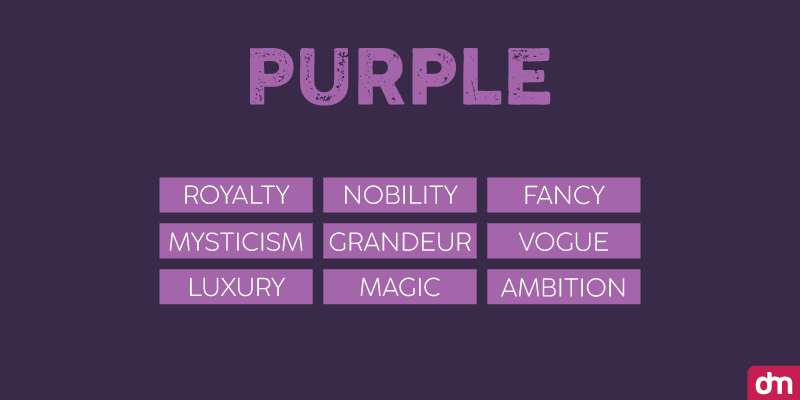
In the modern world, top luxury brands from Chanel to Prada, and Harley Davidson to Ralph Lauren, offer you three things that reflect their luxurious appeal:
- High prices
- Exclusivity
- Premium quality materials
All three things work in tandem. These brands insist on only using the highest quality materials, which are then handcrafted into premium goods — making them already rare and exclusive — and thus expensive.
If you think charging a premium price alone can give you the bragging rights of being a luxury brand, you may be able to wing it — but only for a while.
Consistency and repetition are the bedrock upon which great brands are built — whether luxurious or not. But for an exclusive brand that’s vying to sell to a discerning clientele, consistently using premium quality and artisan craftsmanship is going to be essential.
Understanding Luxury Shoppers
Have you ever seen a Lamborghini ad on TV?
Nobody has because Lamborghini doesn’t do television.
In what has become a significant part of their brand allure is a statement by Ferruccio Lamborghini, the company’s founder, “We don’t run commercials because our audience isn’t sitting around watching TV.”
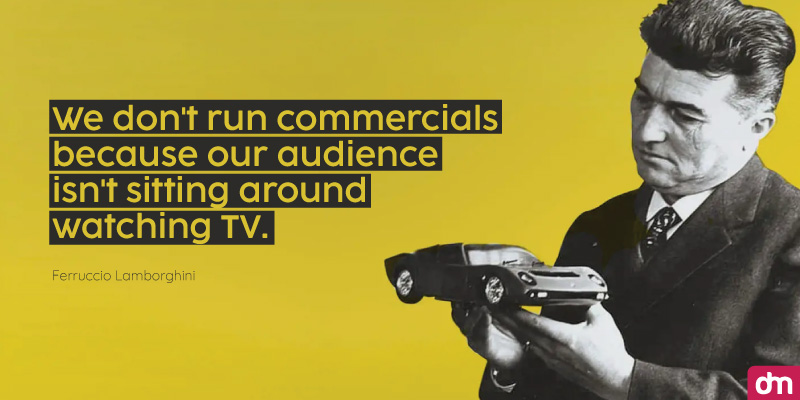
We don’t run commercials because our audience isn’t sitting around watching TV. – Ferruccio Lamborghini
For someone to become able to afford a Lamborghini, they either have to have serious amounts of generational wealth or astounding career successes. In both cases, you won’t find these high-networth individuals sitting around a TV watching commercials. They’ll either attend one specially curated event or another or work on the next big deal of their life that will compound their wealth even more.
To position itself impeccably with these sophisticated buyers, Lamborghini arranges exclusive events, private showcases, and auto exhibitions. Each event immerses the potential Lamborghini customer in the world of superior Italian craftsmanship, legacy, and innovation. On its digital channels, Lamborghini offers a glimpse into its lifestyle, sharing insights and artistry.
Fundamentals of a Luxury Brand
To maintain their captivating appeal and desirability, luxury brands rely on some key fundamentals.
• The differentiating belief
Luxury brands offer more than just great products. They consistently offer a differentiating belief that sets them apart from the competition. It can be different for different brands. For some brands, it’s rooted in their product superiority. For others, it might be about cultural heritage.
Luxury brands from Gucci to Rolex, profess a deep-rooted belief that they deliver along with their products. Gucci is renowned for its bold and eclectic designs. Rolex is synonymous with innovation in watchmaking. Burberry promotes British heritage and prep school legacy while Apple is about creativity and design finesse.
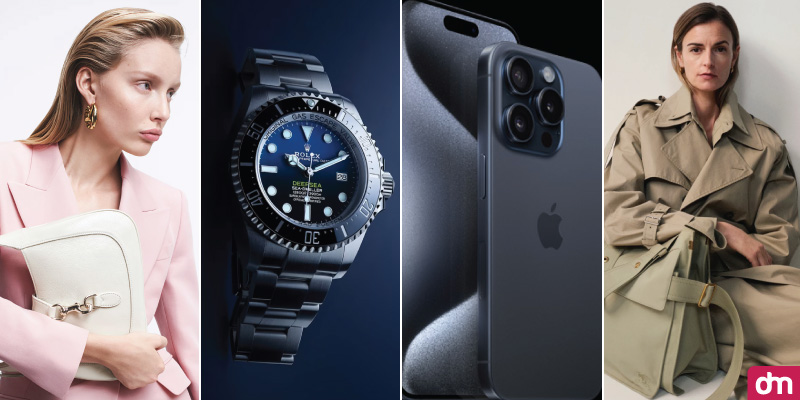
Promoting your luxury brand’s beliefs and values helps customers identify and connect with your brand more closely, and develop strong associations with what your brand has to offer. To ensure these brand values reach the right audience online, many luxury businesses partner with a specialized SEO agency that understands how to maintain exclusivity while optimizing for visibility.
• A visible value system
These luxury brand USPs do not exist in a vacuum. Putting stock behind their words, we see luxury brands entering into partnerships and collaborations and initiating ventures where they can practice their values.
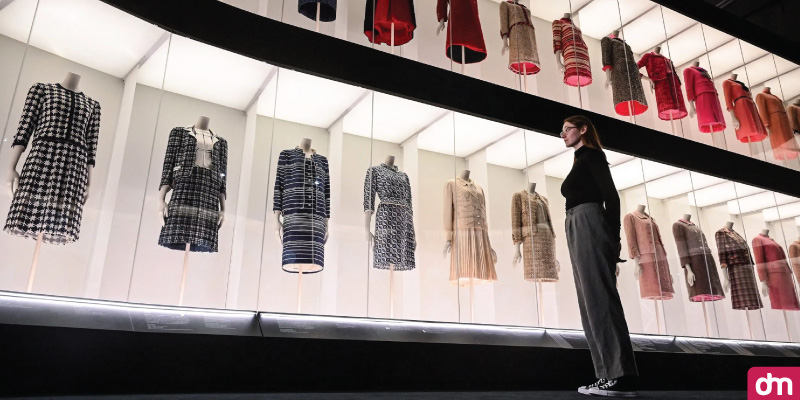
Chanel has a long history of supporting the arts, including sponsoring exhibitions, cultural events, and initiatives to preserve artistic heritage.

Louis Vuitton organizes an annual prize that supports up-and-coming fashion designers by providing mentorship and financial assistance.
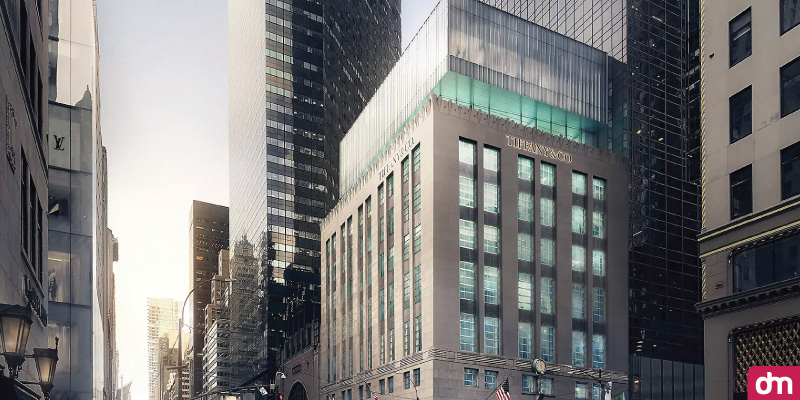
Tiffany & Co. demonstrates a commitment to ethical sourcing and responsible mining through its environmental conversion foundation.
• A tasteful visual language
Luxury brand logo designs exist in beautiful, refined spaces. Think of sleek, minimal, and barely there. From almost undesigned sans-serif logos to neutral color palettes, a luxury brand is understated and quietly rich.
Tasteful logos, abundant white spaces, and a sophisticated visual tone are the hallmarks of luxury brand identity. The usual ingredients of a successful logo design — symbol, tagline, multiple colors — are absent from luxury branding.
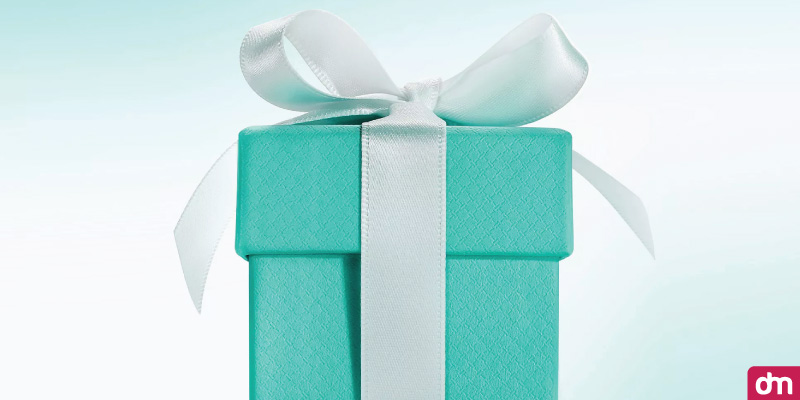
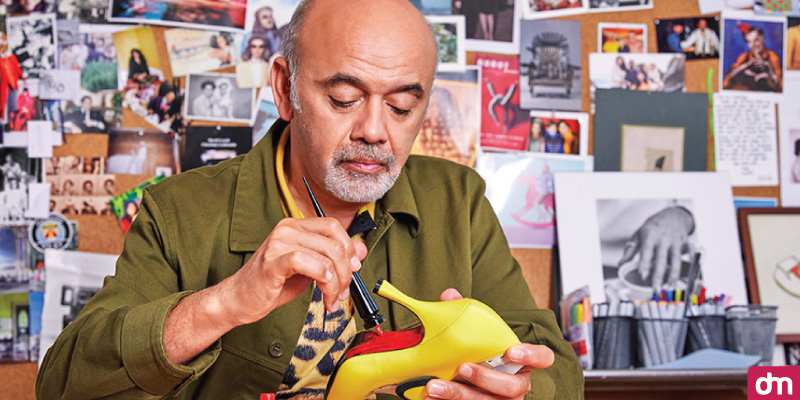
Instead, you’ll see the sector resplendent with bespoke wordmarks, personalized monograms, and iconic details. Tiffany & Co’s blue boxes and Loubuton’s red soles instantly communicate the luxury label they belong to, long before a designer brand logo does.
From luxury cars to rare jewels, designer shoes to haute couture, the visual language of luxury brands practices the brandless branding philosophy.
• Opulent physical spaces
What you don’t see in visual branding, manifests grandly in brand stores and physical spaces that are massive, technologically advanced, and architectural mysteries.
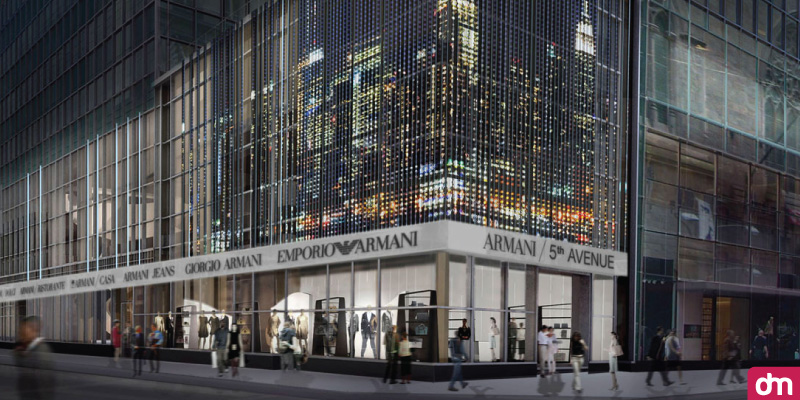
Armani’s flagship store in New York is an architectural marvel. The four-level showroom is interconnected by a rolled steel staircase that looks more like a sculpture than a staircase. The upside-down store of the Dutch fashion house Viktor and Rolf forces you to pause when you walk in for the first time. Several luxury brands from Gucci to Louis Vuitton promote VR-based customer experiences to make shopping at their stores more immersive and personalized.
While digital presence is essential for the luxury sector to stay connected to its audiences, these plush, technology-powered physical spaces allow brands to demonstrate their creativity to their fanbase, highlight their innovation, and ensure satisfactory retailing.
• Exclusive subcultures
Luxury brands have mastered the art of creating exclusive niche clubs within their audiences. These ardent brand loyalists not only fully endorse the brand values but also promote them through their lifestyle.
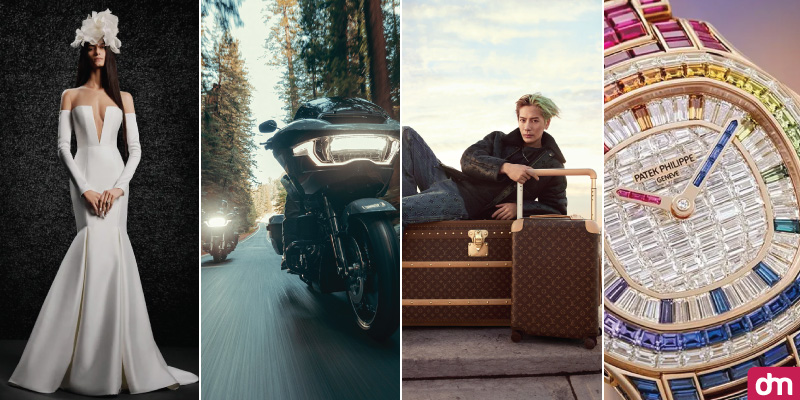
A Vera Wang wedding dress, a Harley Davidson bike, Louis Vuitton luggage, and a Patek Phillipe watch are all ways these brands have become a part of their consumers’ conscience and identity. Try dissuading an Apple user away from the brand. It’s going to be a difficult battle, if not at all futile.
The reason is these brands deliver value as a status symbol. The sign of belonging to an exclusive, close-knit community that many cannot access.
The Design Recipe for Creating Luxury Brands
We have talked on this blog about the woes of minimal design and how it subtracts the character from branding. But for luxury marketing, character and personality are achieved through anonymity and invisibility.
1. Invest in minimal design
Think less, and then minus a few more things from it.
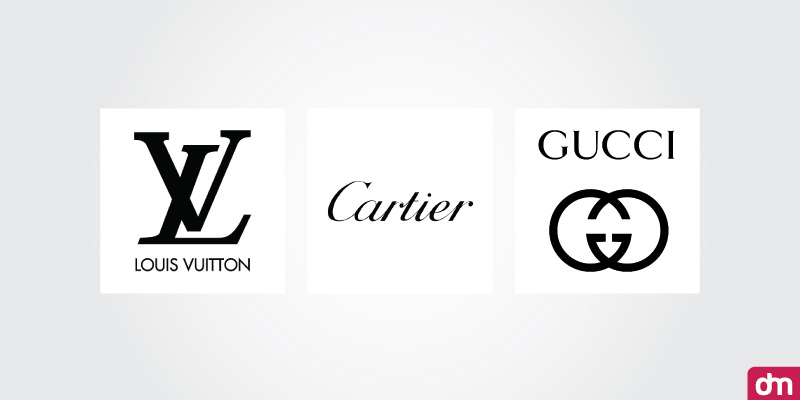
Luxury branding, almost as a rule, never deviates from strictly functional minimalism. If it’s working in black and white, then color needs to go. If words are enough, any symbols are just taking up space. Characterized by clean lines, sparse layouts, and plentiful white space, luxury design is confidently bare and brandless.
2. Trust simple logos
Staying loyal to its minimal appeal, luxury branding favors simpler logos. Typographic logos such as wordmarks or monograms, are therefore, dominate the luxury sector. Devoid of extra details like symbols or shapes, these type-based logos turn the brand name into a visual identity, confidently staying lowkey.
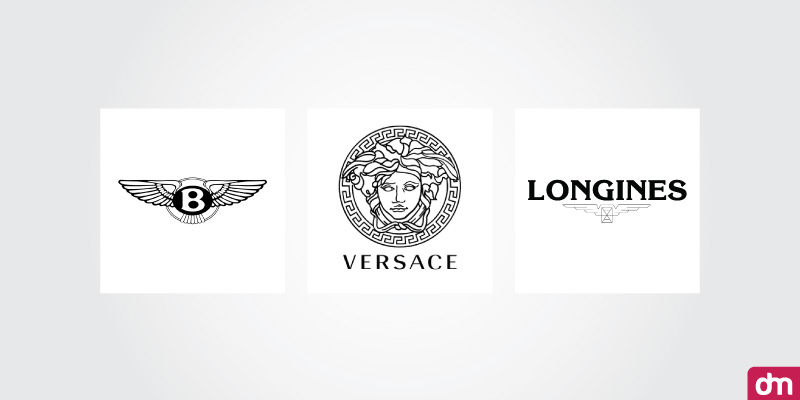
A few examples that include symbols as part of their luxury branding are Bentley, Versace, Longines, Coach, and some others. These brands not only include icons but also coat of arms to communicate their heritage, tradition, and ancestry.
On the whole, however, from high-end fashion labels to private jet lines, minimal design serves iconic luxury brand logos as a natural ally.
3. Max out the white space
Whether fashion photography, magazine printing, or logo designing, extend the white space as much as you can. The white space helps keep the layout clean and supports visual hierarchy. It naturally draws the eye to the focus of the design by removing the excesses and the clutter.
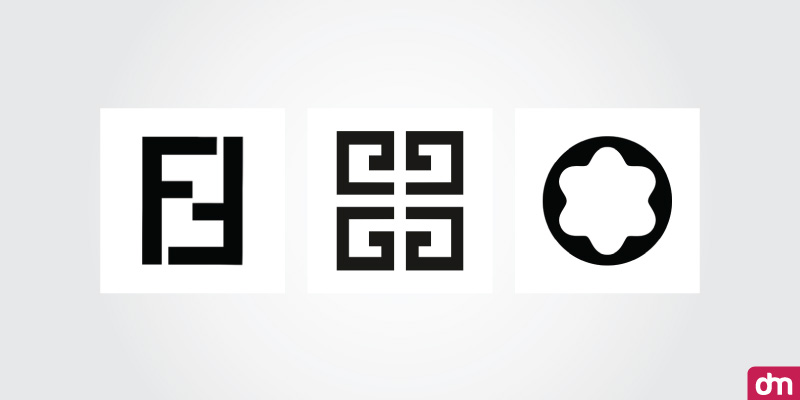
While not too mainstream in luxury branding, you can also use this negative space to add meaning and layers to your message. Creating shapes, symbols, or words that appear from seemingly no space is a work of art and can allow your luxury brand to enjoy more visual attention.
4. Choose a sleek typeface
With not much else in their visual language, luxury brand logo designs make the most use of carefully choosing typefaces to convey their soul.
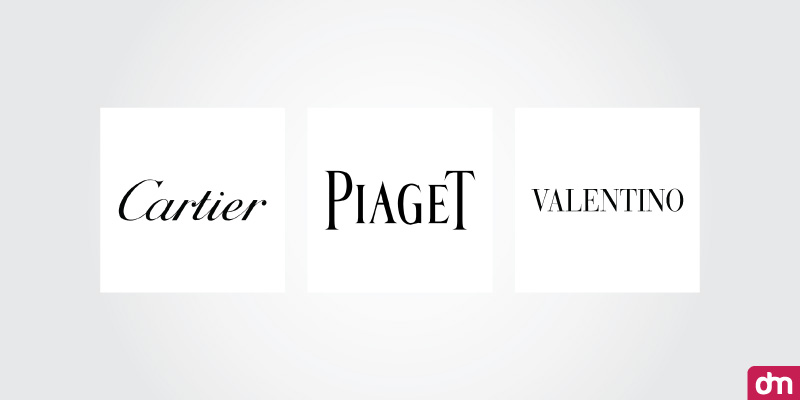
Traditionally, luxury brands have always preferred working with elegant cursives or high-contrast serifs to set themselves apart. Cartier is a classic example and even Piaget and Valentino. But in recent years, we have seen the bulk of luxury branding move over to sans-serifs.
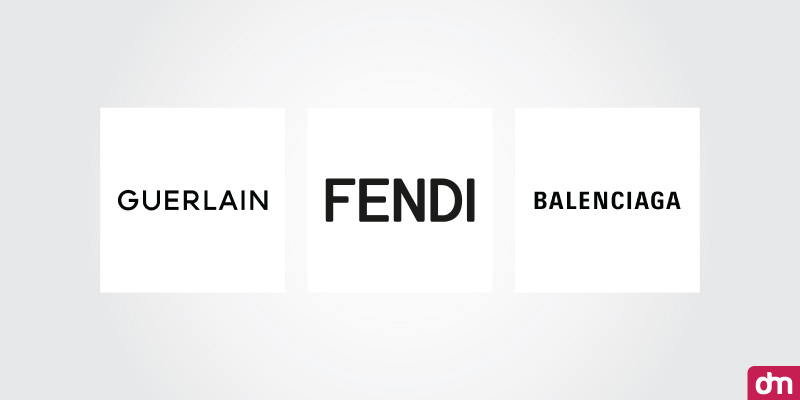
Brands like Fendi, Balenciaga, and Guerlain have chosen cleaner and simpler sans-serif fonts to make their branding even subtler.
But the working principle is the same: sleeker, minimal typefaces that are quietly luxurious and attract attention by being stress-free.
5. Avoid colors (or just add a pop of it!)
Following utilitarian branding, the luxury sector is color-shy.
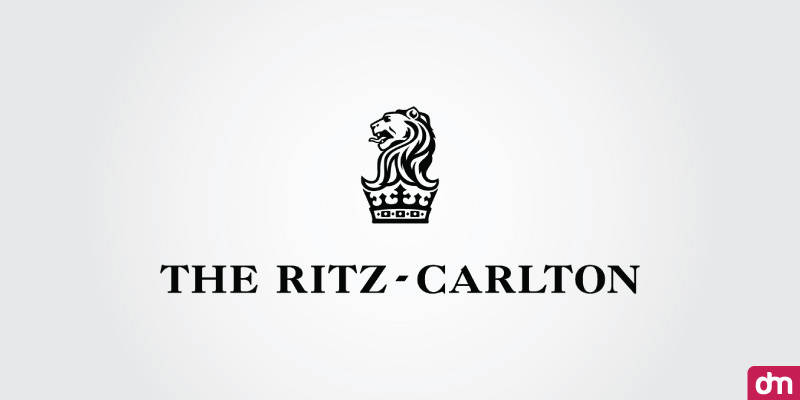
The Ritz-Carlton logo showcases a lion crest on its elaborate design but supports a neutral theme of black and white.
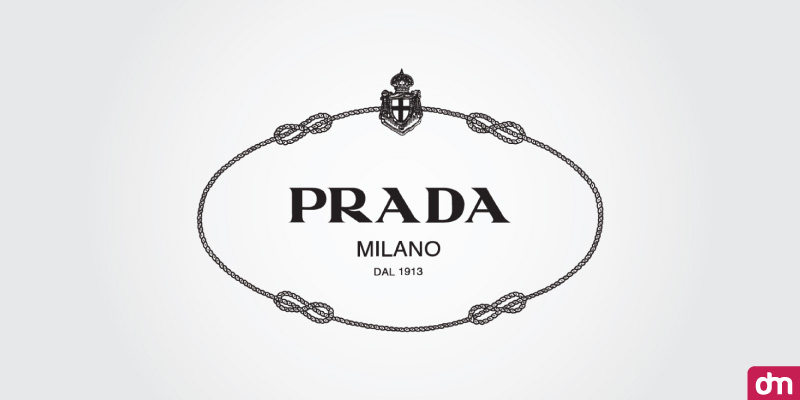
The Prada logo is contained in a shield — which isn’t the norm for luxury branding —- but again the color choices are simpler (black and white).
Promoting subtle branding and stealth wealth concepts, luxury businesses either go for neutral color palettes or only add pops of color here and there for interest.
But is that the rule?
You can say that, though exceptions exist.
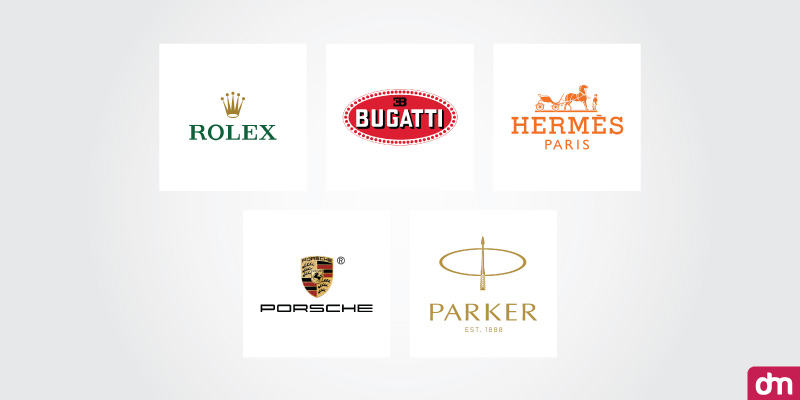
- Hermes has an orange logo design.
- Rolex also stands tall with its deep green branding and a golden crown.
- Bugatti is probably the bravest on this list with a red and white luxury car brand logo.
- Parker has an all-gold logo.
- Porsche has a red and golden shield to go with the branding.
While these are great examples of luxury brands embracing the power of deep colors and saturated shades to show prestige, black-and-white logos are the norm for the luxury fashion industry.
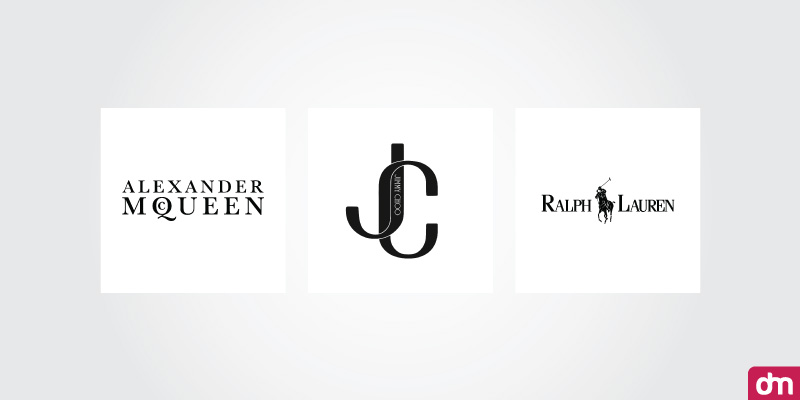
From Jimmy Choo to Tom Ford and Ralph Lauren to Alexander McQueen, iconic luxury fashion logos put their faith in black and there’s no coming back from it. Not at least anytime soon.
6. Add show-stopping photography
The luxury world is not into illustrations and graphics a lot, but they love photography. Pick up any high-end fashion, travel, or architecture magazine, you’ll be awestruck with what great skill behind the lens can do.
Quality photography is central to luxury branding. It’s a way not only to do justice to the finest craftsmanship and raw materials these brands source for their products but also a means to attract the most discerning individuals to their shops and delight their tastebuds.
If you’re building a luxury brand, it’s incomplete without stellar photography marketing the goods. Partner with a talented artist to bring the best of art and technology to highlight your product and services to the most affluent consumers.
Conclusion
Luxury branding is more about communicating an emotional promise than anything else. By employing subtle branding, a value-based brand system, and exclusive subcultures, luxury brands justify their expensive price tags and passionate brand loyalties.
As you begin designing for a luxury brand, conceptualize the emotional need it fulfills to guide your process.



